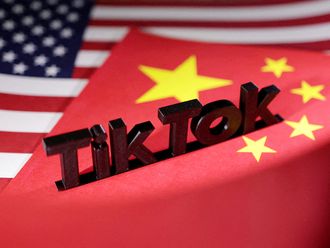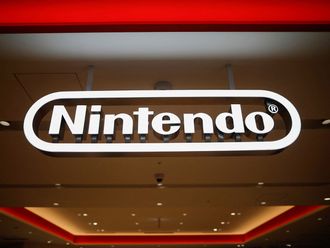
We sat down with Hirokazu Ishizuka, CVP, Global Sales Development at Sony Mobile, on the sidelines of the Mobile World Congress (MWC) in Barcelona to chat about the company’s new products and his plans for the Middle East.
Ishizuka has been Sony Mobile Communications' CVP for Global Sales and Development since his appointment in February 2013.
A few weeks ago, Sony Mobile announced the appointment of Ishizuka as its Middle East and Africa's Vice President, in a restructuring of its Global Sales Development division. This does away with regional layers and he will take responsibility for the region directly.
His additional assignment now sees him take over the responsibilities of Ruediger Odenbach, a veteran from the days of Sony Ericsson.
Could you please tell us a little about yourself?
I am the head of Global Sales at Sony Mobile. Because of the importance of the Middle East, and since it’s a key focus market for Sony and Sony Mobiles, I also started to be directly in charge of the Middle East in addition to my current roles as head of sales.
I would like to develop more business opportunities here and redefine the market and channel structures. Particularly through the powerful products we announced this year at MWC.
Customer retention is a main focus in your role, what is your vision to build customer loyalty and brand loyalty among Middle East customers?
We care about the users of our Xperias. How do we plan to retain them? Well by providing the best user experience. In the case of Xperia, not only as just another android smartphone, we throw in more features such as high-res audio, 4K display quality, and connectivity with all other Sony consumer electronics such as the PlayStation, the remote play functions and the internet of things (IoT) devices that we just announced.
How important is the Middle East for Sony mobile on a global scale? Where does it rank in terms of corporate priority?
Currently I will be focusing on East Asia - mainly Japan, Europe and the Middle East. Those are the three main areas for Sony mobile. Of course we are continuing to do business in all other Asian regions, Latin America and North America. But those three markets are very important.
I believe that people in the Middle East market are big fans of Sony, and these fans understand the value of Sony as an asset and appreciate the technology. I feel that we have a huge opportunity in the region.
You touched on consumers in the Middle East. Do you think the customers here are more interested in the lifestyle and branding aspects of smartphones? Or are they interested in the hard-core tech aspects of smartphones?
I believe both. People in the Middle East understand technology and care about the lifestyle. My vision is that with this Xperia solution, I would really like to connect with the people, beyond the countries and spread happiness with the best user experience.
The Z Series launched last year and now we have the X Series, will there be any more?
Starting from this year, 2016, we are going to start to use the Xperia X series. From premium to middle end.
So will it just the Z and X going forward?
I don’t think so. The Z is going to be replaced by the X. And already you have some representations from the portfolio planning guys for the Xperia X.
Is there any reason the Z is being replaced by the X?
I’m proud of all the evidence, the results and performance of the Xperia Z, because, globally, from Japan to Asia, Europe and the Middle East, it’s a really fantastic product and it really provides favourable business results. We are very satisfied of the success of the Xperia Z series. But in 2016, we would just like to be fresh, with new branding and the Xperia X series, which provides the best user experience.
So would you say 2016 is going to be a very important and exciting year for Sony mobiles?
Yes. Especially in the Middle East.
From 2014, to 2015, Sony mobile had a 2 to 3 per cent global market share. Do you have the figures for the Middle East?
You can talk about numbers, but to me, global numbers doesn’t make sense. Because we clearly define our key focus markets. This year we are not bringing new products into the operator business in the US, not bringing a new product into the operator business in China. We care about our business in our key focus markets of East Asia, Europe and the Middle East.
We needed to turn around the Sony Mobile business financially, and we also needed to complete a transformation and focus on the key focus market with our new Xperia X series solutions.
As you see, products like the Xperia Eye, Ear and Projector – this is just the beginning.
Throughout 2017 and 2018, we will continuously bring very attractive IoT devices to the market. We intend to redefine the IoT industry and will take the lead.
Can you give us a preview of few of the IoT concepts that might come out in the next few years?
IoT will connect our devices to other devices and the cloud and also connect people. I’m not ready to explain the future and our plans yet, but I can say that this is just the beginning. I personally like the Xperia projector.
What do you envision for Sony mobile in the Middle East over the next few years?
I have ambitions to expand the business from this level to the next, but rather than talking about the business’ financial performance itself, I would like the people here to recognise Sony’s Xperia brand as something really attractive with which you are connected to each other and the total Xperia solution is going to be a part of your life.
So it’s safe to say that Xperia is going to break away from just being smartphones? It’s going to be a part of a whole other ecosystem?
Yes, IoT. Today we see the Xperia Ear, Eye and projector.
Going forward do you think Sony will have a regular product release cycle every year?
The way we intend to do this is bring the right products and solutions to the market at the right time. Therefore, we always like to bring the best technologies to meet the requirements in the market.











